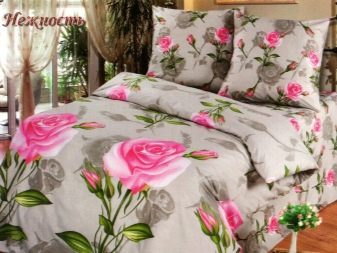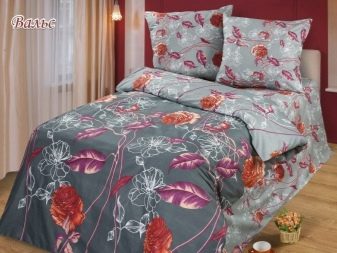Poplin fabric for bedding
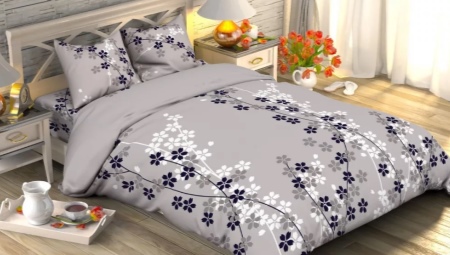
Poplin fabric has been used for the production of bedding for many centuries, but questions about what it is, how it differs in quality and composition from other types of textiles, still arise. All the pluses and minuses of this material are really difficult to assess - it practically has no analogues, it has a long service life and an original weave of threads. To understand why such bedding is better than others, how to choose a euroset and other sets of makopoplin, a detailed review of characteristics and customer reviews will help.
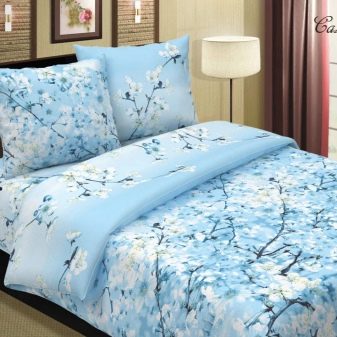
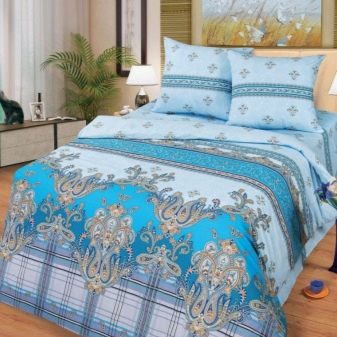
What is it and what does it consist of?
Modern poplin fabric for bedding is made, as it was centuries ago, mainly from natural materials. Most often, it is composed of 100% cotton, but the most expensive sets remain faithful to traditions - they are made silk. This fabric got its unusual name from the place of creation - the papal residence in Avignon.
For the head of the Catholic Church, local craftswomen developed a unique type of textile, in which the base was twice as thick as the ducks.

The description of the poplin weave is also quite unusual. The surface of the fabric is decorated with a characteristic relief - a small "scar". In this case, the fabric is always double-sided, dyed in 1 tone or several, sometimes with patterns. Poplin production today suggests opportunities for bleaching natural fibers, using threads of different shades. Coloring is carried out both as a whole and in the form of a printed pattern.
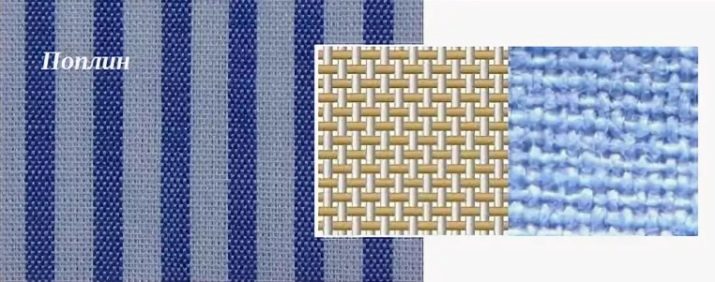
Natural 100% cotton poplin does not stretch. But in Russia, synthetic threads are often mixed with natural threads. The addition of such components to the composition increases the wear resistance of the laundry. Elastane and lycra are added to the canvas to increase its extensibility. Natural or viscose silk bedding is very beautiful, but the quality of the sets depends very much on the raw materials.
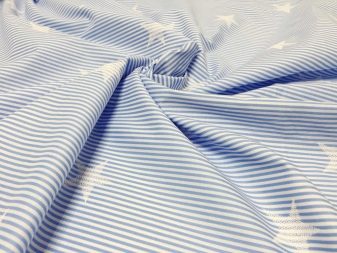
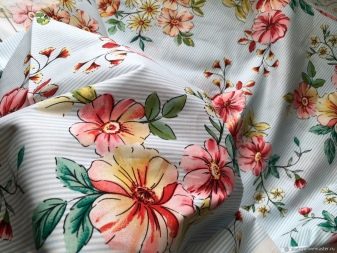
Advantages and disadvantages
Few types of textiles compare to poplin in beauty, strength, functionality. This material has many advantages, among which the quality of the fabric can be distinguished. The main advantages are eight properties.
- No stretching. Accordingly, there is no shrinkage. The poplin bedding set will keep its size for years to come.
- Fastness of staining. There is no need to be afraid that the colors will "float" or stain other products during washing. The color is also resistant to sunlight.
- Resistant to creases. Straighten the laundry well enough when drying. The same is true for spreading the folded set on the bed.
- Hypoallergenic. Natural cotton does not cause skin reactions even in babies. But with brightly colored mixed kits, you should be very careful. Allergies can be caused by the dye and not by the fabric itself.
- Air permeability. Poplin does not interfere with normal ventilation of the skin. Accordingly, the risk of overheating of the body is reduced.
- Excellent thermoregulation. In hot weather, poplin fabric slightly cools the skin, in cold weather it warms.
- No slip. The embossed surface, formed due to the special interlacing of the threads, provides the fabric with such properties. The linen remains pleasant and velvety, but does not slip.
- Affordable cost. The fabric is not among the expensive ones, but the linen from it looks elegant and lasts a long time.
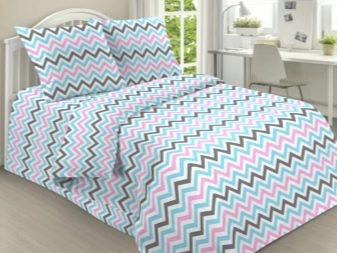
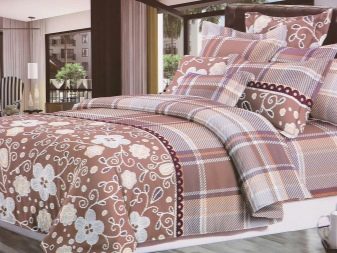
There are also disadvantages. The obvious disadvantages of modern kits include an incompletely natural composition, as well as some savings on the quality of tailoring and cutting. When buying, you should look closely at the seams on the products as carefully as possible.
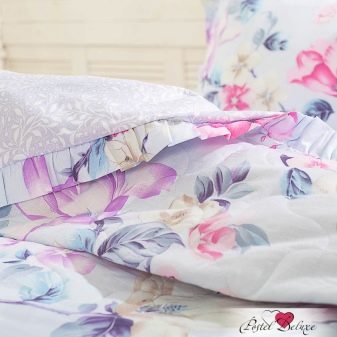
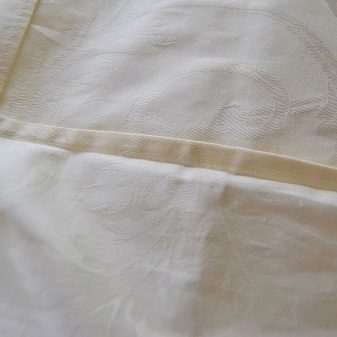
What density is needed?
When choosing bed linen made from natural and artificial fabrics, you should pay attention to the density of the textiles. Indicators of at least 110 g / m2 are considered normal. They differ from fabric to fabric. The density of 110-125 g / m2 is considered the norm for poplin, that is, it is quite suitable for the manufacture of high-quality bed linen that meets all requirements and standards.
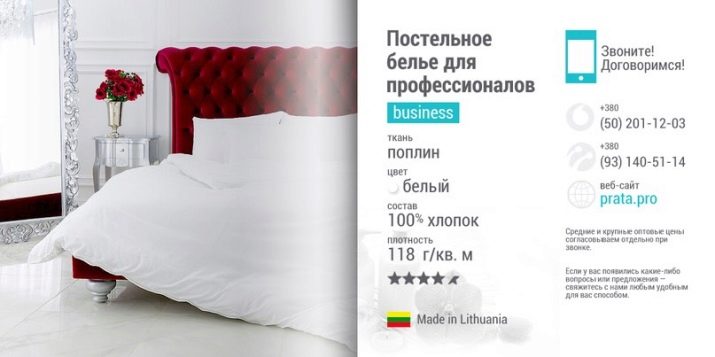
Varieties of material
Poplin, like other popular types of fabrics, has several varieties at once. There are six interesting options among them.
- Bleached. This poplin lacks the gray and yellow shades of natural cotton. After bleaching, the fabric becomes monochromatic, acquires a slight sheen. Whitening takes place with the help of chemicals.
- Multicolored. The material is created from pre-dyed fibers connected in series by color.
- Plain colored. The desired color is given to the finished textile fabric.
- Printed, with a printed pattern. In this case, a smooth one-color fabric is covered with the same type or complex multi-color prints on special machines. Beautiful 3D kits are made using this technology.
- Makopoplin. This name usually refers to a blended fabric consisting of a combination of cotton and synthetic fiber - polyester. Such products are brighter, retain the brightness of color longer.
- Poplin jacquard. It features a unique pattern on the surface of the bed linen. Most often it is produced in a printed way, in contrast to the classic jacquard fabric.
These are the main categories into which it is customary to divide poplin fabrics.Taking into account the peculiarities of each of the options, you can easily find a fabric that will delight the eye with its brightness and beauty for a long time.
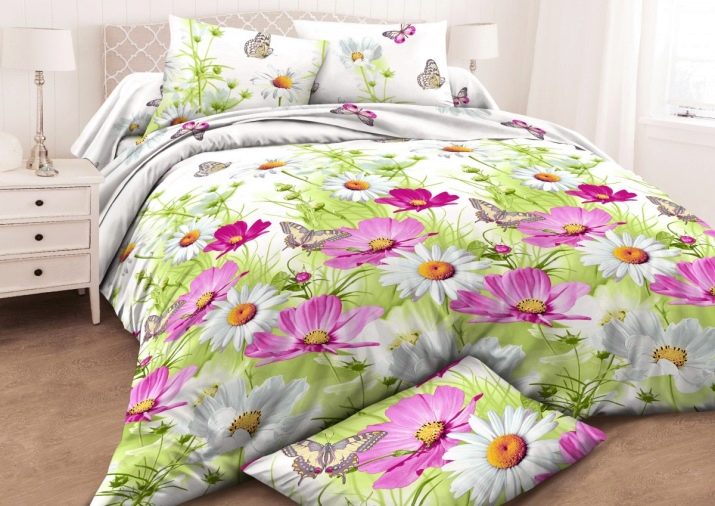
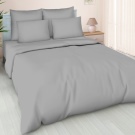

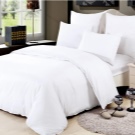
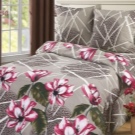
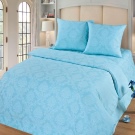
Kit options
Understanding the variety of sets options, it is worth deciding from the very beginning on the parameters that poplin bedding should correspond to. The dimensions of such products are strictly defined. But additional elements - an elastic band on the sheet, a zipper on duvet covers and pillowcases - already depend on the manufacturer. Solid underwear is most often in neutral shades: white, gray, black, as well as in a milky-coffee range. Drawing largely depends on the fashion for certain prints. The theme "Fauna" with animalistic ornaments, flowers and landscapes, geometric prints are always relevant.
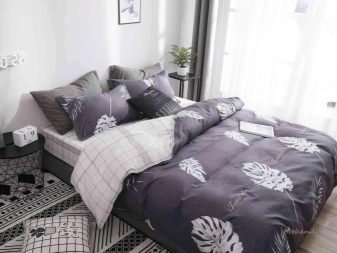
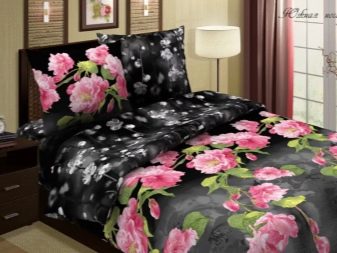
Eurokit
This bedding format assumes the use of square pillowcases 70 × 70 cm - there are 2 of them. The bed sheet always has dimensions of 2.2 by 2.4 m, but the duvet cover can measure 2.2 × 2 m or 2.2 × 2.4 m. Euro sets are very popular among the owners of modern bedding and orthopedic mattresses. They are suitable for 1 person or a couple's family sleep.
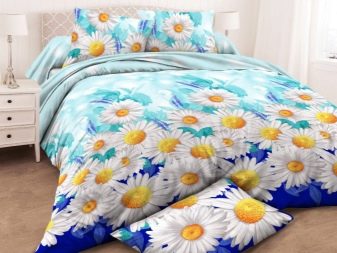
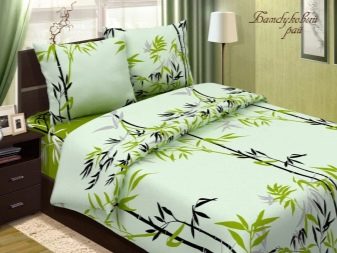
Double
Classic bed linen on the Russian market. The standard bed sheet for a double bed is 1.5 x 2.2 m. The duvet cover in such a set is 1, presented in the size of 1.75 × 2.15 m. There are 2 pillowcases, they are of the traditional square format. Twin sets are quite popular with couples who prefer regular bed sizes.
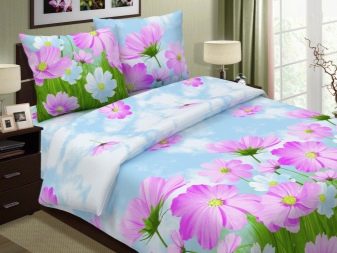
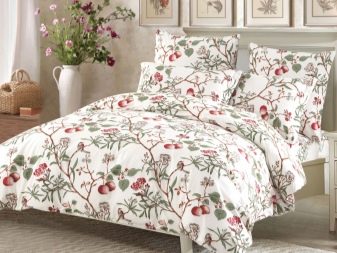
One and a half
Another popular bedding format made from poplin. One-and-a-half sets are complemented by 2 pillowcases measuring 0.7 × 0.7 m. The sheet here is 1, rather compact, 1.5 m wide and 2.2 m long. The duvet cover in the set has dimensions of 1.45 × 2.15 m. One-and-a-half bedding is good for a 1-person room or a teenager's bedroom.
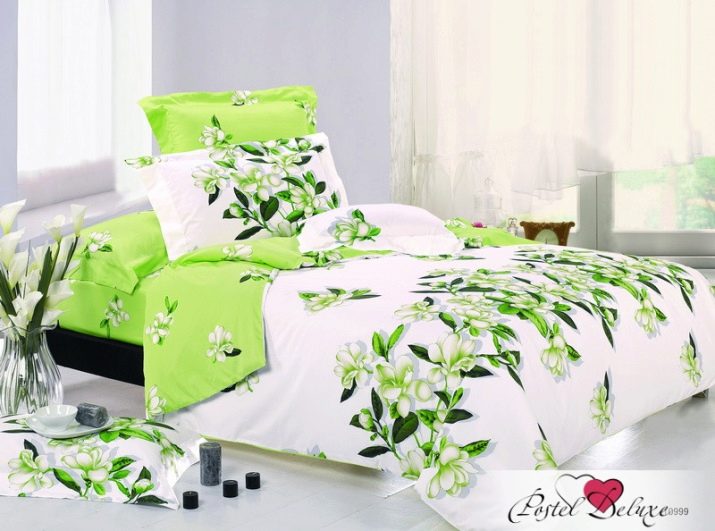
Baby
Depending on the size of the bed, the poplin baby bedding includes 1 x 1.38 m or 1.2 x 1.6 m sheets. The pillowcase is 1, format is 0.4 x 0.6 m. The duvet cover can have dimensions of 1 × 1.4 or 1.2 × 1.5 meters. Children's poplin sets - the most diverse in design. It is customary for kids to offer original and cute stories with images of fairy-tale characters, toys, or with neutral floral prints.
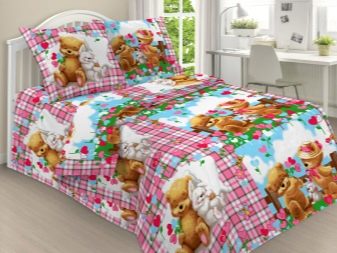
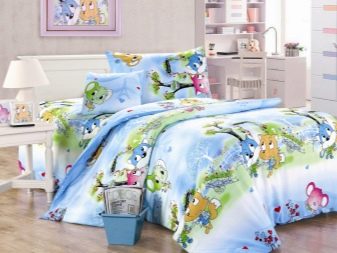
Older children will appreciate the 3D printed bedding in the form of cartoon characters. Also, girls really like drawings with animals, and boys - superhero themes, various equipment, cars. Manufacturers are ready to offer neutral solutions: striped colors, checkered patterns, with abstract geometric ornaments.
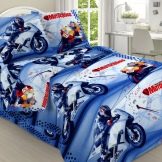
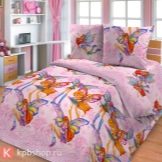
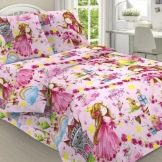
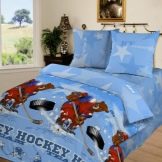
How to choose?
The basic rules for choosing bed linen made from poplin are as simple as possible. The main thing to remember is that Russian manufacturers make such products from imported fabrics. The domestic market is predominantly filled with makopoplin. This material can hardly be called high-quality. High-quality fabrics for sewing are produced by those countries where cotton is produced: Uzbekistan, Turkey, India.
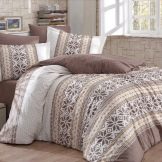
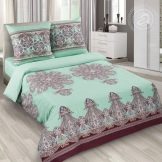
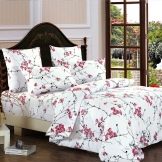

Also, before buying, you should pay attention to important points.
- Famousness of the manufacturer. Among foreign firms, Aimee and Mency have proven themselves well. Among the Russian brands are Art-Postel, Mercury Home, Bravo.
- The quality of tailoring and cut. Poplin is a difficult fabric to process, prone to gathering even a straight line. You can avoid negative moments by checking everything in advance. Smooth seams, no protruding threads, matching the length and width of the products - this is what distinguishes a high-quality set of underwear.
- Brightness of color, clarity of the picture. No blurry borders should be seen. All color transitions, image outlines on a quality product can be clearly traced.The brighter the kit, the more relevant the dye safety test will be. The product must have all the necessary hygiene certificates.
- Crease of fabric. If, after squeezing in the hand, it does not immediately take on its previous shape, the manufacturer clearly saved on the quality of the product by adding synthetic fibers to it. Quality cotton poplin spreads quickly and easily.
- Design. When choosing bed linen made of natural cotton, you should focus on the overall design of the room, as well as on your own tastes. Solid sets and options with a neutral print (striped, check) can be presented as a gift. A 3D drawing on the surface of bed linen may well become a bright accent in the interior of a bedroom.
- Composition. The presence of a share of polyester among the fibers is a guarantee that the set will quickly lose its appearance and shape, and will be covered with spools. Even with the general low cost, such products can hardly be called a profitable purchase. But the sets made of natural silk are the most expensive. They are as close as possible to poplin made using traditional technology.
With these guidelines in mind, you can easily cope with the tasks of finding the right kit, as well as avoid common mistakes made by buyers.
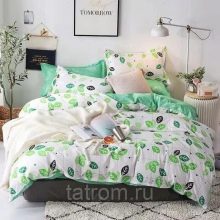
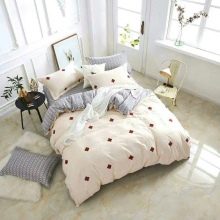
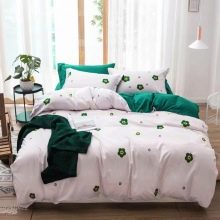
How to care?
Poplin bedding does not need complex and expensive care. Natural cotton fabrics are allowed to be ironed at high temperatures, machine washed. There are no restrictions on spinning either. It can be produced at high speeds without the risk of damaging textiles.
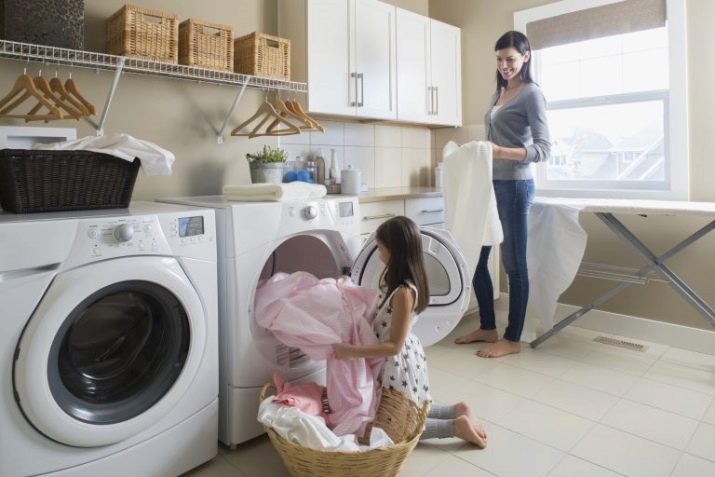
When washing poplin sets with an admixture of synthetic fabrics, you have to pay attention to the manufacturer's recommendations. The more artificial fibers in the composition, the lower the recommended water temperature will be. Most of the bedding made from mixed fibers can be exposed to thermal effects not exceeding +40 degrees.
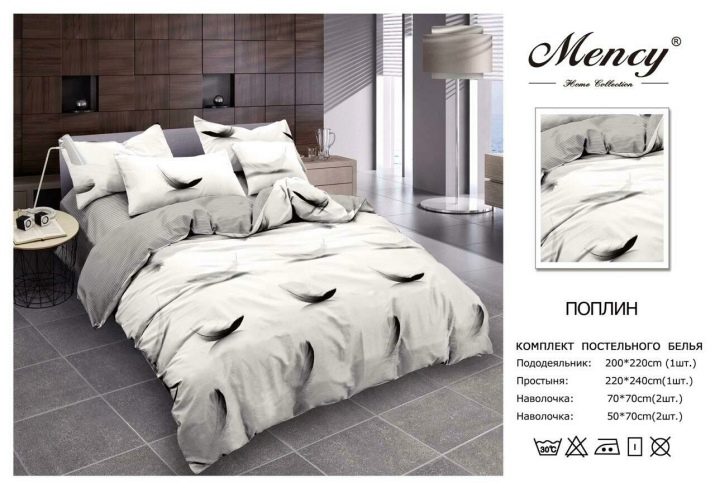
You do not need to choose special detergents for washing. Any powder that is compatible with household appliances will work. But when drying poplin products, do not forget about the need to carefully turn the products onto the wrong side. Drying is recommended in the shade, although the fabric is not too afraid of exposure to sunlight. Very bright colors in the decoration of duvet covers and sheets, if this rule is neglected, can fade.
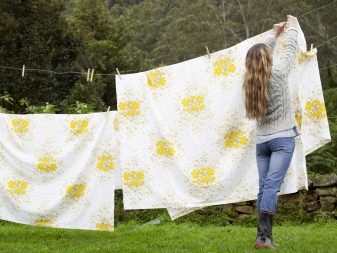
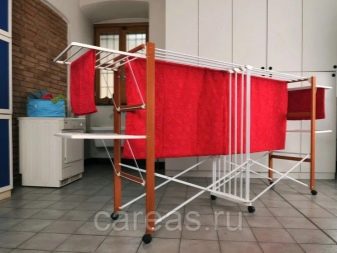
Review overview
According to the vast majority of buyers, poplin fabric is great for bedding. These sets are loved by people who do not want to iron their clothes. The fabric practically does not wrinkle, after washing and drying it can be immediately covered on the bed.
During a night's rest, poplin does not create the feeling of a "steam room", the body remains comfortable. The non-slip surface prevents linen from knocking down, even during restless children's sleep.
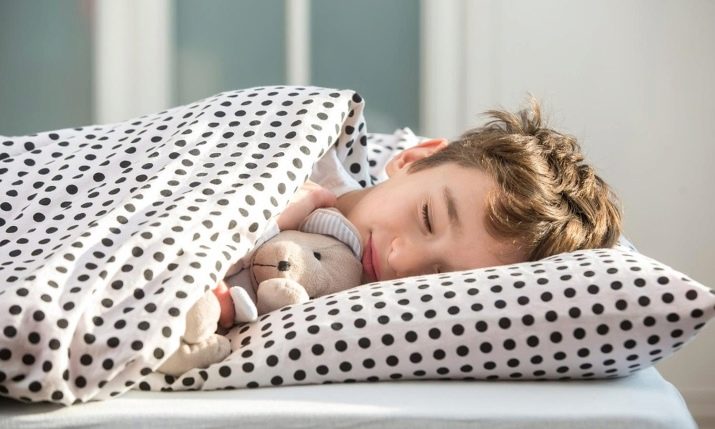
Buyers also note other positive features of poplin linen. The matte shine of the set looks noble; such products have practically no problems with matching the size range. A plus is the lightness of bed linen - it is not at all heavy. The fabric can be bleached, the natural base is well cleaned of stains and dirt during washing.
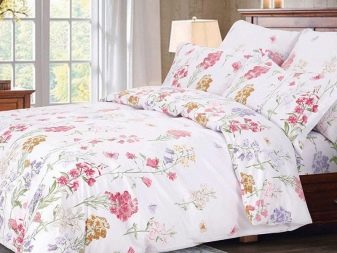
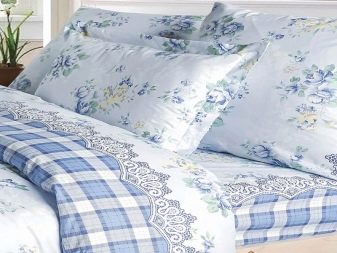
There are also disadvantages. The popularity of poplin sets has led to the fact that many products have appeared on the market that are only remotely related to this fabric. Especially many negative reviews are found about makopoplin, which contains polyester. Such fabrics may discolor from the very first wash. There are other complaints about cotton poplin - it seems rather tough, especially if earlier thin coarse calico, chintz were used for sleep.
